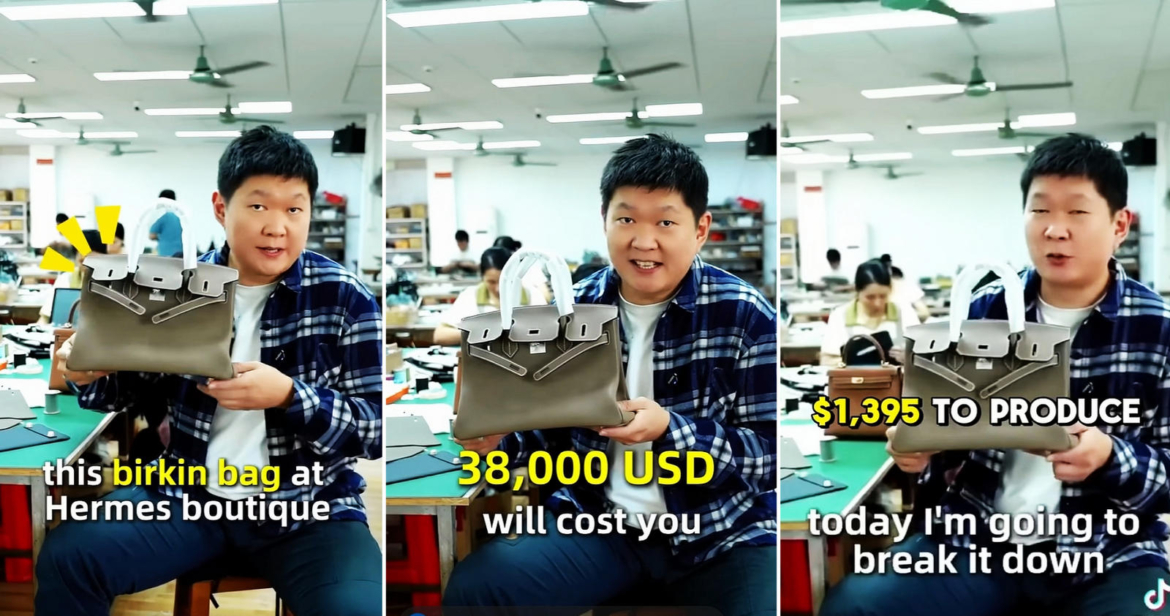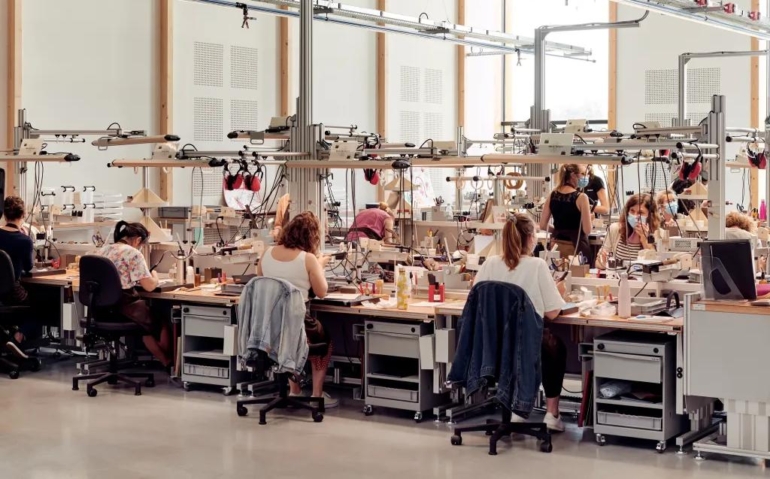Hermès has been grabbing headlines for all the right and wrong reasons. On one side, it recently surpassed luxury giant LVMH in market capitalization. On the other, a viral video viewed by tens of millions on social media undermines its 188-year legacy to mere price tags. A Chinese factory worker revealed that a $38,000 Hermès Birkin bag reportedly costs just $1,400 to make. The video meticulously breaks down the costs: $450 for premium leather sourced from Italy, France, and Germany; $25 for high-end French thread; $150 for saltwater-resistant stainless steel hardware; $50 for imported edge paint; $100 for suede lining; and $10 for the zipper.
The employee then claims that if one doesn’t care about the logo, the “same” bag could be yours for just 1/25th the price, or about 4 percent. For some, the idea of owning a Hermès-quality product directly from a supplier at a fraction of the cost might seem tempting. But there’s far more to a Birkin than raw materials.
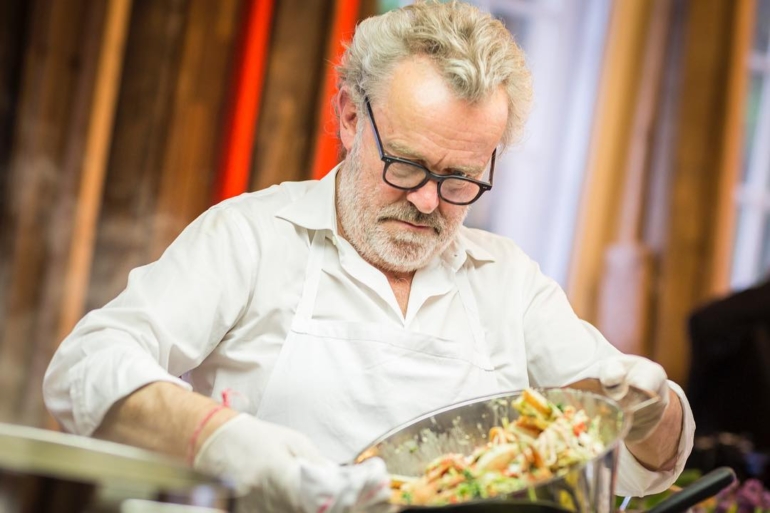
To say the bags are ‘the same’ is like suggesting that simply buying eggs from the same Loire Valley farm as Chef Alain Passard would allow you to recreate his signature L’Arpège Egg, famously served at his three Michelin-starred Paris restaurant, L’Arpège. An egg may cost just 25 cents at the farm, but it’s the chef’s artistry that transforms it into a highlight of a $600 tasting menu, a delicacy people willingly wait weeks to savor. The ingredient may be identical, but the mastery certainly is not.
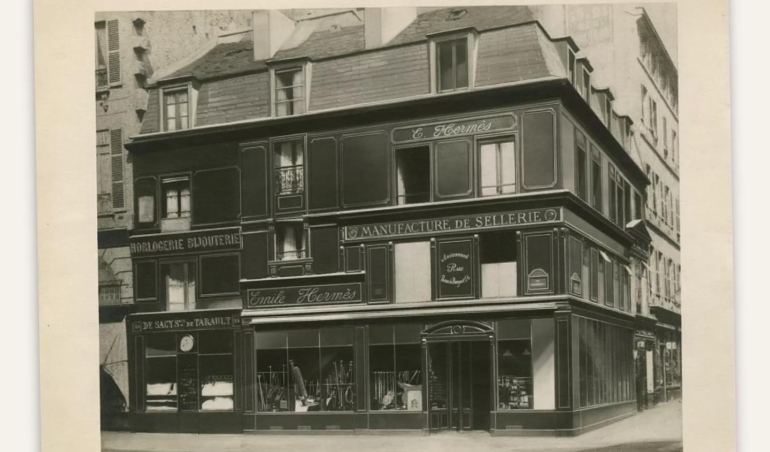
Likewise, Hermès was not an overnight sensation. Founded in 1837, the Parisian maison built its reputation over generations. Simply assembling the right components doesn’t match the skill, heritage, and care that go into every Hermès bag. Here’s why Hermès continues to command its price, and respect-
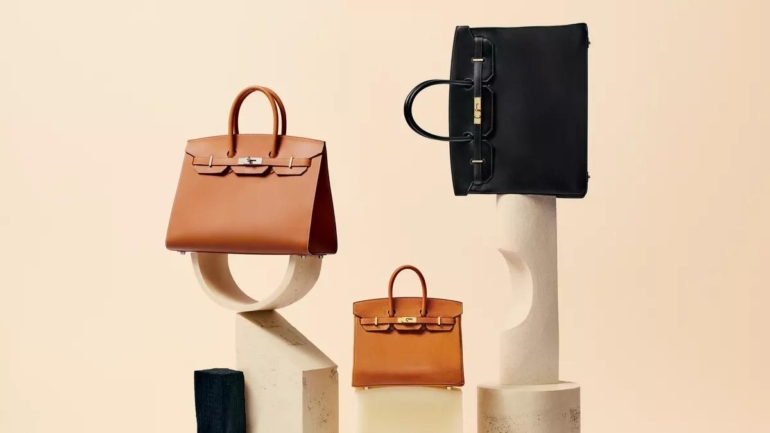
What sets Hermes apart-
Founded by Thierry Hermès as a harness workshop for European nobility, the house has always prioritized craftsmanship over mass production. Every product is made with meticulous care, with no shortcuts or assembly lines. From hand-stitched saddles to silk scarves and watches that double as art, every item reflects an unwavering devotion to quality.
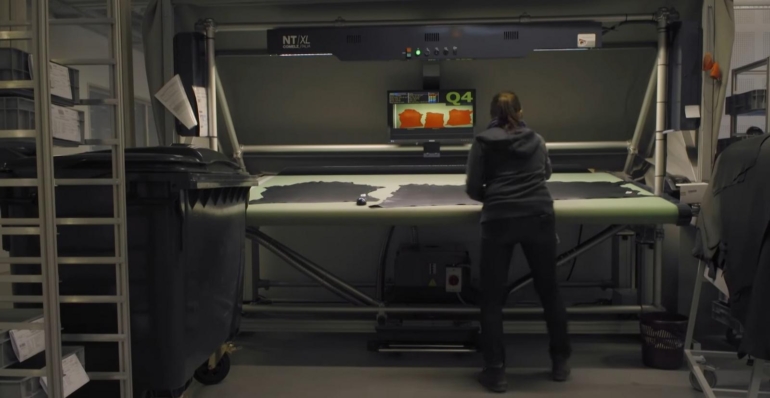
Hermès remains largely family-owned, preserving its values and standards. Today, it is the most valuable luxury brand in the world, with a market cap of $276.3 billion, surpassing LVMH Moët Hennessy Louis Vuitton SE’s valuation of $274.5 billion, the very company that once tried to acquire it.

A committed system of talent and genius-
At Hermès, even a single stitch is not taken lightly. If it doesn’t meet the exacting standards honed over nearly 200 years, the leather workshop, or maroquinerie, won’t proceed. Take Émilie, a Saint-Vincent-de-Paul leather artisan who joined Hermès in 2015. “There’s a little bit of our soul in each bag.”
Central to Hermès craftsmanship is the saddle stitch, a technique where two needles pass through the same hole from opposite sides. Unlike a machine-made lockstitch, which unravels if one thread breaks, the hand-stitched saddle stitch remains intact.
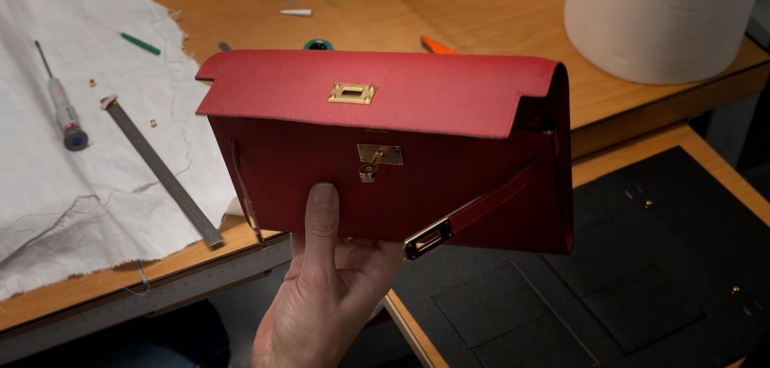
Artisans even use salpha, a paper-like fabric, to make mockups before cutting into precious leather. Inspiration is drawn from equestrian catalogues, influencing everything from the shape of the bag to the design of the strap. At Hermès, nothing is inconsequential. Designing a bag may take three months, and crafting it to be “rack-ready” takes another six months, almost as long as it takes to make a baby.
The people behind the pieces-
Hermès employs over 200 designated mentors, 80 master trainers, and 200 artisans, including trainees, many of whom are trained in-house at the École Hermès des savoir-faire. This training school provides formal diplomas in leatherworking. According to Priscilla Spring, Creative Director of Leather Goods at Hermès, artisans undergo four years of training just to earn the right to craft the Kelly bag, which takes 13 hours to complete. One error, and the bag must be restarted from scratch.
Sustainability married to style-
Hermès bags are not trend pieces. They’re heirlooms. Designed to last for decades, Hermès builds them with longevity in mind and offers repair services even 30 years after purchase. At 15 dedicated repair workshops worldwide, the Maison services up to 120,000 pieces annually, from worn shoulder straps to decades-old saddles. Sometimes, an artisan may even repair a bag they originally crafted.
A behind the scene video of how Hermes bags are made by Vogue
Can a $1,400 knockoff from any factory guarantee this kind of unwavering commitment?
